Bass sanctuaries protect popular sport fish
Scientists are learning more about largemouth bass to ensure the sustainability of the fishery.
On a quiet cove in Southern Maryland, a series of orange and white markers declares a stretch of water off limits to fishing. Under the surface sits spawning habitat for largemouth bass, a fish that contributes millions of dollars to the region’s economy each year and for whom two such sanctuaries have been established in the state. Here, the fish are protected from recreational anglers each spring and studied by scientists hoping to learn more about them and their habitat needs.
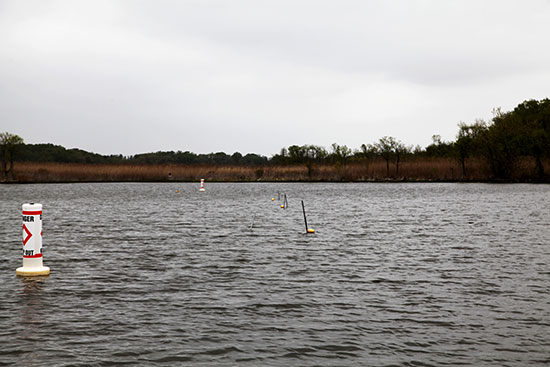
The largemouth bass can be found across the watershed and is considered one of the most popular sport fishes in the United States. While regional populations are strong, a changing Chesapeake Bay—think rising water temperatures, disappearing grasses and the continued arrival of invasive species—is changing bass habitat and could have an effect on future fish.
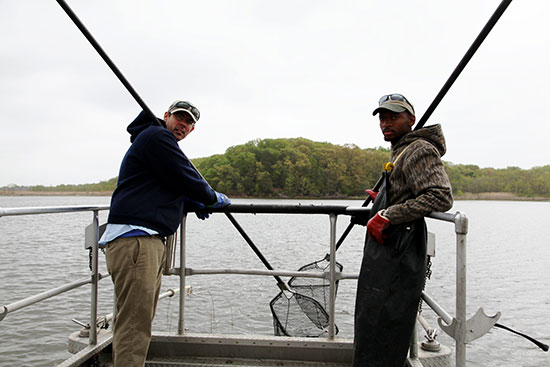
For decades, scientists with the Maryland Department of Natural Resources (DNR) have collected data on the distribution of largemouth bass, tracking the species and monitoring the state’s two sanctuaries in order to gather the knowledge needed to keep the fishery sustainable. Established in 2010 on the Chicamuxen and Nanjemoy creeks, both of which flow into the Potomac River, these sanctuaries have been fortified with plastic pipes meant to serve as spawning structures. And, it seems, these sanctuaries are in high demand during spawning season.
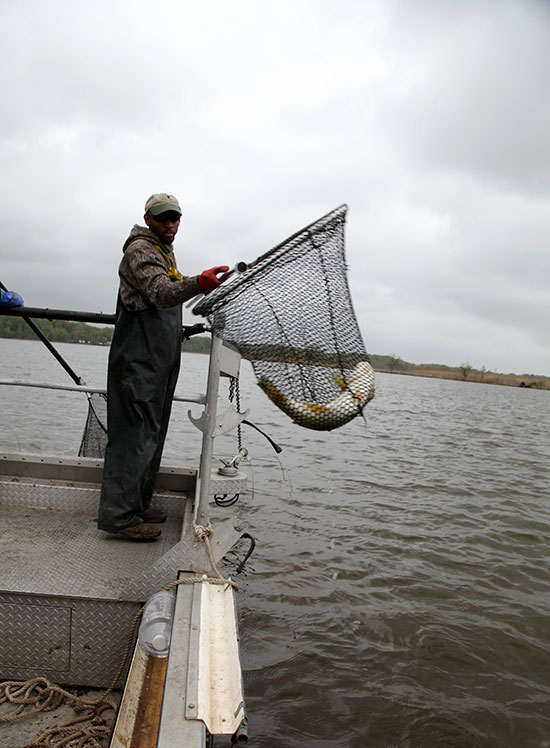
On an overcast day in April, three members of the DNR Tidal Bass Survey team—Joseph Love, Tim Groves and Branson Williams—are surveying the sanctuary in Chicamuxen Creek. Groves flips a switch and the vessel starts to send electrical currents into the water, stunning fish for capture by the scientists on board. The previous day, the team caught, tagged and released 20 bass; this morning, the men catch 19, none of which were tagged the day before.
“This [lack of recaptures] indicates that we have quite a few bass out here,” said Love, Tidal Bass Manager.
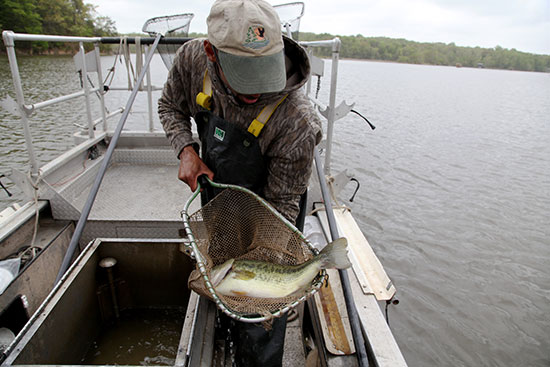
Indeed, the state’s largemouth bass fishery “is pretty doggone good,” Love continued. “That said, we recognize that the ecosystem is changing. And I don’t think anybody wants to rest on the laurels of a great fishery.”
As Love and his team learn how largemouth bass are using the state’s sanctuaries, they can work to improve the sanctuaries’ function and move to protect them and similar habitats from further development or disturbance.
“We can speculate where the best coves are, but this is the ground truthing that we need to do,” Love said.
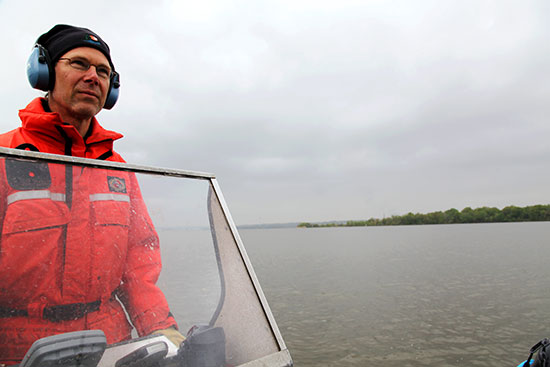
In the fall, the team will return to the cove to count juvenile bass and report on juvenile-to-adult population ratios. While the assessment of the state’s sanctuaries is a small-scale project, it is one “aimed at the bigger picture,” Love said.
Love’s team is “doing what we can to improve the use of these coves by bass.” And protecting bass habitat and improving water quality will have a positive effect on the coves overall, creating healthier systems for neighboring plants and animals.
“By protecting these important areas, we are also protecting the larger ecosystem,” Love said.
Photos by Jenna Valente. To view more, visit our Flickr set.

Comments
There are no comments.
Thank you!
Your comment has been received. Before it can be published, the comment will be reviewed by our team to ensure it adheres with our rules of engagement.
Back to recent stories